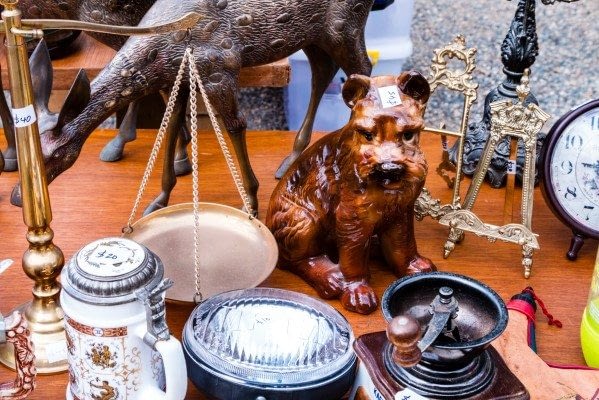Not really sure how to price yard sale items? Here are a few tips to get you started.
- Price everything before the sale. Anything without a price tag will likely lead to haggling and confusion. Instead, put prices on everything with bright stickers—they’re easier to see than tape or light-colored stickers. Just don’t use stickers on anything fragile or collectible since they cause damage; in these cases, low tack painter’s tape or a paper insert are better choices.
- Protect your prices. To prevent shoppers from switching stickers, consider writing the name of the item on the sticker. You can also keep an inventory of each item you’re selling and its price. An inventory can be a helpful tool if a sticker falls off or you suspect someone is lying about an item’s price.
- Remember the rule of thumb. A general rule of thumb is to price yard sale items at 10 to 20 percent of what they currently retail for, depending on their age and condition. People won’t pay a lot for anything old and worn, so price those items on the lower end of the spectrum—possibly less than $1 per item, especially if it’s clothing.
- Check your emotions. Yes, you may have paid $100 for that coat. And you may have sentimental memories of certain items. But the people visiting your sale won’t pay a premium for those memories or the fact that you paid a pretty penny for something in the past.
- Check online sites and classified ads to get an idea on pricing. Some helpful sites that can help you set baseline prices include eBay and Craig’s List. Another option is to visit other area yard sales to see how other people price yard sale items.
- Price most things below $5. Lots of people go to yard sales with no intention of spending more than a few dollars. Having a variety of lower-priced items will give them plenty of things to buy—and those small sales really do add up over the course of a day.
- Think twice about selling smaller, pricier items at your yard sale. Smaller, pricier items like jewelry are targets for thieves. You might be better off selling them privately or taking them to a jeweler or a consignment store.
- Assume you’ll get some hagglers. This is especially true for pricier items like furniture or electronics. Prepare for that possibility by pricing yard sale items at 10 to 20 percent above the minimum you’re willing to accept for them. Not willing to negotiate? Then write “firm price” on the item’s sticker.
Be ready at the point-of-sale by having plenty of change. Also keep the dollar bill in view of the buyer until you make the change—this can help prevent accusations of shortchanging.


